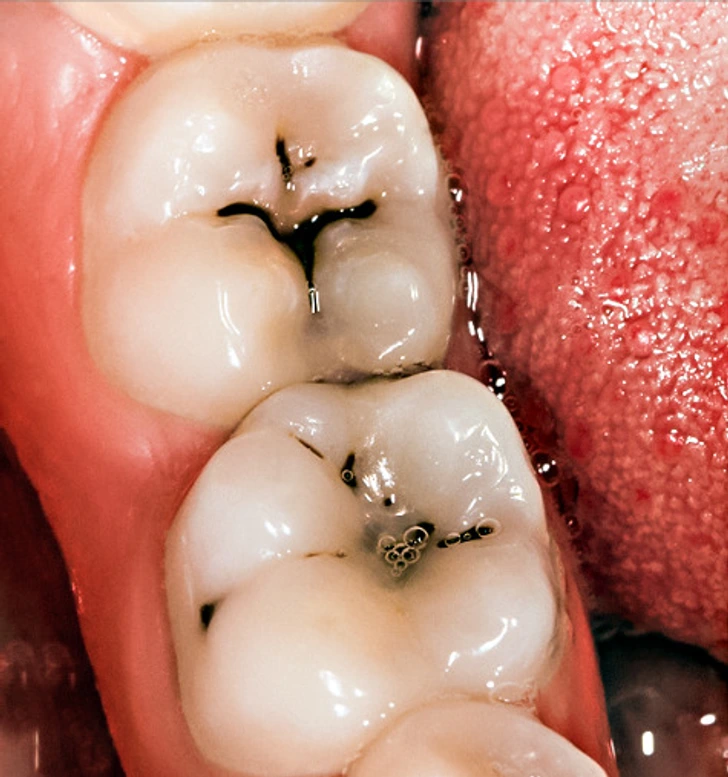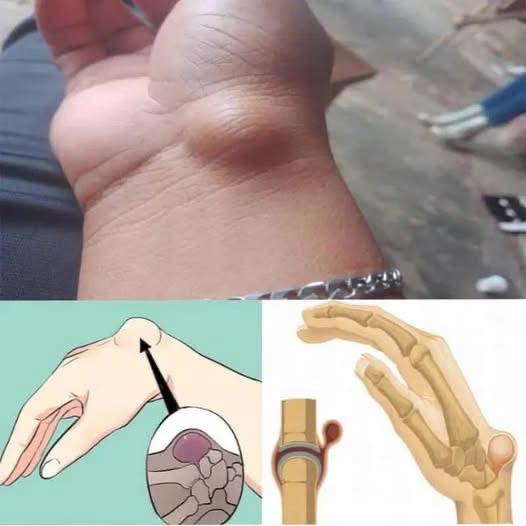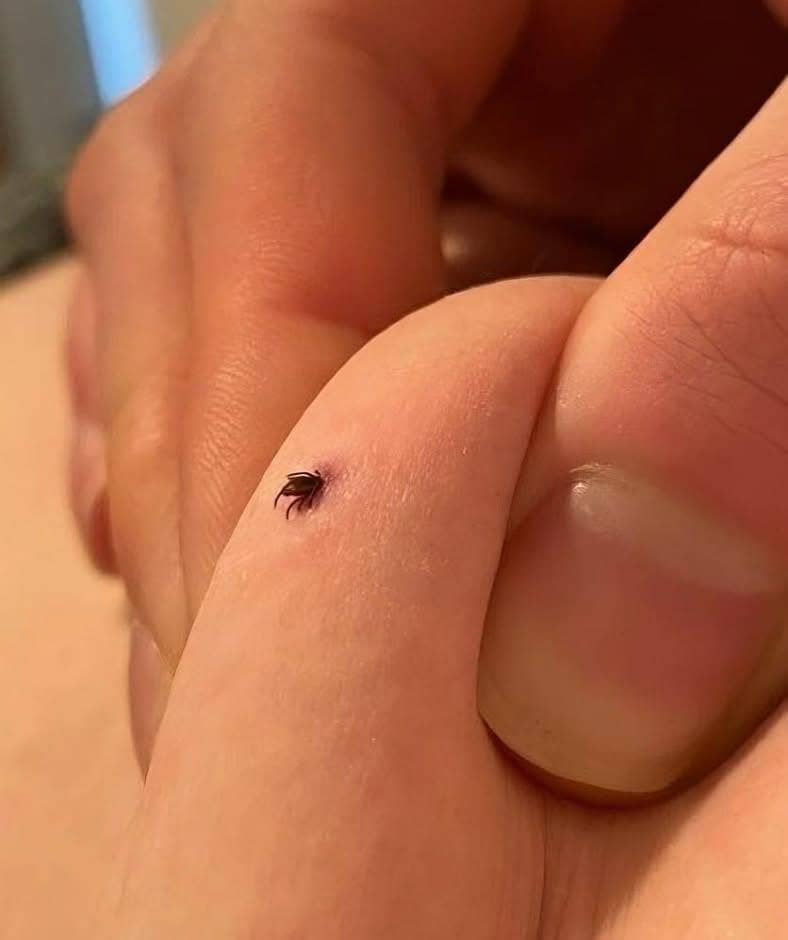Recognizing the early signs of dementia isn’t always easy — they often hide behind what feels like everyday forgetfulness, mood swings, or simple fatigue. But these subtle changes can be the brain’s quiet way of asking for help.
The sooner we learn to notice these early red flags, the better we can support those affected — with understanding, care, and timely medical attention.
CONTENT IS PROVIDED FOR INFORMATIONAL PURPOSES ONLY AND IS NOT INTENDED AS A SUBSTITUTE OF MEDICAL ADVICE. SEEK GUIDANCE OF YOUR DOCTOR REGARDING YOUR HEALTH AND MEDICAL CONDITIONS.
Urinary issues

Urinary incontinence is a common physical symptom of dementia, especially in later stages. A person may fail to reach the bathroom in time, forget they need to go, or lose control of their bladder. They might also struggle to find the toilet, particularly in unfamiliar settings. This can cause embarrassment, distress, and a need for constant assistance.
Difficulty performing familiar daily tasks.

Routine activities that once felt effortless can become overwhelming for someone with dementia. Simple tasks such as dressing, cooking, or bathing may turn confusing as the brain loses its ability to sequence steps or recall necessary actions. A person might forget the correct order for putting on clothes, struggle to prepare a basic meal, or neglect hygiene due to memory lapses.
These difficulties often lead to increased dependence on caregivers, highlighting the progressive nature of the condition.
Alzheimer’s-specific symptoms

Alzheimer’s is the most common cause of dementia, which affects memory, planning, and organization skills.
Maintaining good oral health is crucial, not just for a bright smile, but also for your brain health, especially when it comes to Alzheimer’s disease. Research has shown that a bacterium, linked to gum disease, has been found in the brains of Alzheimer’s patients. This bacterium produces harmful substances that can damage brain cells, leading to the buildup of proteins that cause memory loss and cognitive decline, two major symptoms of Alzheimer’s.
Poor oral hygiene could contribute to these symptoms, as bacteria from the mouth can travel to the brain, making it even more important to take care of your teeth and gums to potentially reduce the risk of neurodegeneration.
Inappropriate behavior

People with dementia may begin to exhibit behavior that seems out of character, disregarding social norms they once followed. This is known as disinhibition, a symptom that occurs when brain changes affect impulse control. As a result, they might make rude or tactless remarks, act inappropriately in social settings, or engage in impulsive actions such as touching strangers or speaking loudly in quiet places.
These behaviors can be distressing for loved ones, but they stem from the neurological decline associated with dementia rather than deliberate intent.
Dementia affects more than memory—it also impairs visual-spatial abilities, making everyday navigation and recognition difficult. Individuals may misjudge distances, struggle with depth perception, or have trouble recognizing familiar faces and objects. These issues can increase the risk of wandering, cause difficulty with reading, and even make driving unsafe.
As visual-spatial decline progresses, a person may lose confidence in their surroundings, further contributing to confusion and disorientation.
People with dementia often experience sleep problems: difficulty falling asleep, frequent nighttime awakenings, and confusion after dark. Many become unusually active in the evening — a phenomenon known as sundowning. Daytime drowsiness can also occur, even after a full night’s rest. These disruptions affect natural sleep rhythms and often increase irritability and anxiety.
Here are some more signs that could point to serious health issues.
The sooner we learn to notice these early red flags, the better we can support those affected — with understanding, care, and timely medical attention.
CONTENT IS PROVIDED FOR INFORMATIONAL PURPOSES ONLY AND IS NOT INTENDED AS A SUBSTITUTE OF MEDICAL ADVICE. SEEK GUIDANCE OF YOUR DOCTOR REGARDING YOUR HEALTH AND MEDICAL CONDITIONS.
Urinary issues

Urinary incontinence is a common physical symptom of dementia, especially in later stages. A person may fail to reach the bathroom in time, forget they need to go, or lose control of their bladder. They might also struggle to find the toilet, particularly in unfamiliar settings. This can cause embarrassment, distress, and a need for constant assistance.
Difficulty performing familiar daily tasks.

Routine activities that once felt effortless can become overwhelming for someone with dementia. Simple tasks such as dressing, cooking, or bathing may turn confusing as the brain loses its ability to sequence steps or recall necessary actions. A person might forget the correct order for putting on clothes, struggle to prepare a basic meal, or neglect hygiene due to memory lapses.
These difficulties often lead to increased dependence on caregivers, highlighting the progressive nature of the condition.
Alzheimer’s-specific symptoms

Alzheimer’s is the most common cause of dementia, which affects memory, planning, and organization skills.
Maintaining good oral health is crucial, not just for a bright smile, but also for your brain health, especially when it comes to Alzheimer’s disease. Research has shown that a bacterium, linked to gum disease, has been found in the brains of Alzheimer’s patients. This bacterium produces harmful substances that can damage brain cells, leading to the buildup of proteins that cause memory loss and cognitive decline, two major symptoms of Alzheimer’s.
Poor oral hygiene could contribute to these symptoms, as bacteria from the mouth can travel to the brain, making it even more important to take care of your teeth and gums to potentially reduce the risk of neurodegeneration.
Inappropriate behavior

People with dementia may begin to exhibit behavior that seems out of character, disregarding social norms they once followed. This is known as disinhibition, a symptom that occurs when brain changes affect impulse control. As a result, they might make rude or tactless remarks, act inappropriately in social settings, or engage in impulsive actions such as touching strangers or speaking loudly in quiet places.
These behaviors can be distressing for loved ones, but they stem from the neurological decline associated with dementia rather than deliberate intent.
Dementia affects more than memory—it also impairs visual-spatial abilities, making everyday navigation and recognition difficult. Individuals may misjudge distances, struggle with depth perception, or have trouble recognizing familiar faces and objects. These issues can increase the risk of wandering, cause difficulty with reading, and even make driving unsafe.
As visual-spatial decline progresses, a person may lose confidence in their surroundings, further contributing to confusion and disorientation.
People with dementia often experience sleep problems: difficulty falling asleep, frequent nighttime awakenings, and confusion after dark. Many become unusually active in the evening — a phenomenon known as sundowning. Daytime drowsiness can also occur, even after a full night’s rest. These disruptions affect natural sleep rhythms and often increase irritability and anxiety.
Here are some more signs that could point to serious health issues.
Pleasure is a powerful form of connection in intimate relationships, and for many, exploring ways to increase satisfaction is an important part of a healthy love life. While female orgasms are often thought to be elusive or complex, with the right mindset, communication, and techniques, it’s possible to bring a woman to climax in less than a minute. But before diving into the “how,” it’s crucial to understand that every woman is different. What works for one may not work for another, and consent and comfort must always come first.
Here are 8 strategic steps that can lead to rapid orgasm—when the mood, chemistry, and comfort are just right.
1. Start With Mental Stimulation
A woman’s arousal often starts in the mind. Creating anticipation through dirty talk, flirtation, or erotic messages throughout the day can be incredibly powerful. Teasing her imagination builds up desire, so when the physical interaction begins, she’s already halfway there. The brain is the most powerful sex organ—use it well.
2. Set the Mood
Ambiance matters. Whether it’s dim lighting, sensual music, or a cozy space, setting the stage helps her relax and feel safe—key ingredients for an orgasm. The less distracted and more comfortable she feels, the faster she can reach climax. Sensual smells, soft sheets, or even a glass of wine can help ease tension and get her in the mood.
3. Understand Her Body
Every woman has unique preferences when it comes to touch. Learn what areas make her moan, squirm, or breathe heavier. For many women, the clitoris is the most direct path to orgasm, but some enjoy pressure on the G-spot or a mix of both. Knowing what turns her on physically is essential if you’re aiming for a quick climax.
4. Focus on Foreplay—Before You Even Touch Her
Foreplay isn’t just kissing and touching—it’s about creating sexual tension. Whisper in her ear, talk about what you want to do to her, or let your hands hover just over her skin. That build-up of anticipation can make physical touch exponentially more powerful when it finally happens.
5. Master the Clitoris
The clitoris is the pleasure center for most women, with over 8,000 nerve endings. Use your fingers, tongue, or a high-quality vibrator. Start gently and increase intensity based on her reactions. Circular, rhythmic movements often work well, but listen to her breathing, moans, and body movements—they’ll guide you.
6. Use Toys if Needed
Don’t be afraid to bring a toy into the action. Many women orgasm more easily with a vibrator, and using one doesn’t diminish your role—it enhances the experience. A small, powerful toy can provide the kind of stimulation that fingers or a tongue can’t always deliver, especially under a one-minute goal.
7. Build Rhythm and Pressure
Once you find a motion that she responds to, stay consistent. Changing things up too soon can break her momentum. Use steady rhythm and pressure. Watch her cues and maintain whatever’s working. If she’s close, keep going with exactly the same pattern. Sudden changes are the fastest way to derail an orgasm.
8. Stay Tuned In
Eye contact, words of encouragement, and responding to her energy all matter. Let her know it’s okay to let go. The more emotionally connected and present you are, the more she’ll feel safe enough to climax quickly. Make it a shared experience—not just a goal.
Final Thoughts
Every woman is different, and while these steps can help create the right conditions for a quick orgasm, the most important ingredients are trust, communication, and mutual desire. The one-minute orgasm is possible—but only when she feels fully seen, respected, and turned on. Focus on her pleasure, stay in tune, and let passion do the rest.
Here are 8 strategic steps that can lead to rapid orgasm—when the mood, chemistry, and comfort are just right.
1. Start With Mental Stimulation
A woman’s arousal often starts in the mind. Creating anticipation through dirty talk, flirtation, or erotic messages throughout the day can be incredibly powerful. Teasing her imagination builds up desire, so when the physical interaction begins, she’s already halfway there. The brain is the most powerful sex organ—use it well.
2. Set the Mood
Ambiance matters. Whether it’s dim lighting, sensual music, or a cozy space, setting the stage helps her relax and feel safe—key ingredients for an orgasm. The less distracted and more comfortable she feels, the faster she can reach climax. Sensual smells, soft sheets, or even a glass of wine can help ease tension and get her in the mood.
3. Understand Her Body
Every woman has unique preferences when it comes to touch. Learn what areas make her moan, squirm, or breathe heavier. For many women, the clitoris is the most direct path to orgasm, but some enjoy pressure on the G-spot or a mix of both. Knowing what turns her on physically is essential if you’re aiming for a quick climax.
4. Focus on Foreplay—Before You Even Touch Her
Foreplay isn’t just kissing and touching—it’s about creating sexual tension. Whisper in her ear, talk about what you want to do to her, or let your hands hover just over her skin. That build-up of anticipation can make physical touch exponentially more powerful when it finally happens.
5. Master the Clitoris
The clitoris is the pleasure center for most women, with over 8,000 nerve endings. Use your fingers, tongue, or a high-quality vibrator. Start gently and increase intensity based on her reactions. Circular, rhythmic movements often work well, but listen to her breathing, moans, and body movements—they’ll guide you.
6. Use Toys if Needed
Don’t be afraid to bring a toy into the action. Many women orgasm more easily with a vibrator, and using one doesn’t diminish your role—it enhances the experience. A small, powerful toy can provide the kind of stimulation that fingers or a tongue can’t always deliver, especially under a one-minute goal.
7. Build Rhythm and Pressure
Once you find a motion that she responds to, stay consistent. Changing things up too soon can break her momentum. Use steady rhythm and pressure. Watch her cues and maintain whatever’s working. If she’s close, keep going with exactly the same pattern. Sudden changes are the fastest way to derail an orgasm.
8. Stay Tuned In
Eye contact, words of encouragement, and responding to her energy all matter. Let her know it’s okay to let go. The more emotionally connected and present you are, the more she’ll feel safe enough to climax quickly. Make it a shared experience—not just a goal.
Final Thoughts
Every woman is different, and while these steps can help create the right conditions for a quick orgasm, the most important ingredients are trust, communication, and mutual desire. The one-minute orgasm is possible—but only when she feels fully seen, respected, and turned on. Focus on her pleasure, stay in tune, and let passion do the rest.
Vintage Perm Rods: A Curl Through Time
Perm rods—also called perm rollers—were essential tools in the early 20th century for creating permanent curls. Simple metal or plastic cylinders at first, they evolved in the 1950s–60s into flexible, varied rods suited for all hair types.
My sister found several small vintage items at home today, but she doesn’t know their purpose. Have you ever seen anything like these….?

The 1980s and 1990s marked their heyday, as big curls became wildly popular and perm rods became cultural icons. The perm process involved washing, rolling, applying chemicals, and neutralizing—each rod size producing a different curl type.
Rediscovering Vintage Perm Rods: A Journey Through Hairstyling History
Perms moved from salons to homes with DIY kits, making the look widely accessible. Though less mainstream today, vintage perm rods remain influential. Stylists use them for retro-inspired looks, and collectors prize them as symbols of beauty history.
These charming tools represent a time when curls defined fashion—and they continue to inspire nostalgic, stylish revivals.
Perm rods—also called perm rollers—were essential tools in the early 20th century for creating permanent curls. Simple metal or plastic cylinders at first, they evolved in the 1950s–60s into flexible, varied rods suited for all hair types.
My sister found several small vintage items at home today, but she doesn’t know their purpose. Have you ever seen anything like these….?

The 1980s and 1990s marked their heyday, as big curls became wildly popular and perm rods became cultural icons. The perm process involved washing, rolling, applying chemicals, and neutralizing—each rod size producing a different curl type.
Rediscovering Vintage Perm Rods: A Journey Through Hairstyling History
Perms moved from salons to homes with DIY kits, making the look widely accessible. Though less mainstream today, vintage perm rods remain influential. Stylists use them for retro-inspired looks, and collectors prize them as symbols of beauty history.
These charming tools represent a time when curls defined fashion—and they continue to inspire nostalgic, stylish revivals.
A wrist ganglion, also known as a synovial cyst, is a fluid-filled lump that commonly appears on the back or front of the wrist. It is a benign condition, but it can cause discomfort or interfere with joint movement.
A wrist ganglion forms when synovial fluid, which lubricates the joints and tendons, accumulates in an abnormal capsule or bursa. Although there is not always a clear cause, some factors may influence its appearance:
Synovial cysts vary in size and can grow or shrink over time. Symptoms include:
A visible, soft lump on the wrist.
Pain or discomfort when moving the joint.
A feeling of pressure or numbness if the ganglion presses on a nerve.
Treatment depends on the size of the cyst and whether it causes pain or limits movement. Some options include:
1. Observation
If the ganglion is not painful or affecting mobility, doctors usually recommend doing nothing and just observing if it goes away on its own.
2. Immobilization
Wearing a splint or wrist brace can reduce pressure on the joint and prevent the cyst from growing.
3. Aspiration
A doctor can drain the fluid with a needle, but there is a chance the cyst could recur.
4. Surgery
If the ganglion causes severe pain or limits mobility, it can be removed surgically. This procedure has a lower chance of recurrence.
A wrist ganglion forms when synovial fluid, which lubricates the joints and tendons, accumulates in an abnormal capsule or bursa. Although there is not always a clear cause, some factors may influence its appearance:
Synovial cysts vary in size and can grow or shrink over time. Symptoms include:
A visible, soft lump on the wrist.
Pain or discomfort when moving the joint.
A feeling of pressure or numbness if the ganglion presses on a nerve.
Treatment depends on the size of the cyst and whether it causes pain or limits movement. Some options include:
1. Observation
If the ganglion is not painful or affecting mobility, doctors usually recommend doing nothing and just observing if it goes away on its own.
2. Immobilization
Wearing a splint or wrist brace can reduce pressure on the joint and prevent the cyst from growing.
3. Aspiration
A doctor can drain the fluid with a needle, but there is a chance the cyst could recur.
4. Surgery
If the ganglion causes severe pain or limits mobility, it can be removed surgically. This procedure has a lower chance of recurrence.
Ticks are small, blood-sucking parasites that can be found in forests, grasslands, and even in our own backyards. These unwelcome guests can pose a serious health risk, as they are known to transmit a variety of diseases, including Lyme disease, Rocky Mountain spotted fever, and tularemia. If you’ve discovered a tick in your home, it’s important to take swift and proper action to prevent the spread of disease and future infestations
Identify the Tick:
The first step in handling a tick in your home is to identify the type of tick you’re dealing with. Not all tick species are equally dangerous, and knowing the specific type can help you determine the appropriate course of action. If you’re unsure, take a clear photo of the tick and consult with a medical professional or pest control expert for identification.
Remove the Tick:
Once you’ve identified the tick, the next step is to remove it from your skin or your pet’s skin. Use a pair of tweezers or a specialized tick removal tool to grasp the tick as close to the skin as possible. Gently pull the tick straight out, avoiding any twisting or squeezing motions that could cause the tick’s head to break off and remain in the skin.
Identify the Tick:
The first step in handling a tick in your home is to identify the type of tick you’re dealing with. Not all tick species are equally dangerous, and knowing the specific type can help you determine the appropriate course of action. If you’re unsure, take a clear photo of the tick and consult with a medical professional or pest control expert for identification.
Remove the Tick:
Once you’ve identified the tick, the next step is to remove it from your skin or your pet’s skin. Use a pair of tweezers or a specialized tick removal tool to grasp the tick as close to the skin as possible. Gently pull the tick straight out, avoiding any twisting or squeezing motions that could cause the tick’s head to break off and remain in the skin.
Have you noticed small bumps or pimples on your tongue? Although they may often seem harmless, these bumps can be a sign that your body is trying to tell you something important.
In this article, we’ll explain the possible causes, symptoms, and treatments for this condition, as well as tips for preventing its appearance.
What Are Pimples on the Tongue?
Tongue bumps are small bumps that appear on the surface or edges of this muscular organ. They can be white, red, or the same color as the tongue, and can sometimes cause pain or discomfort, especially when eating or drinking.
Although in many cases they do not represent a serious problem, these pimples may be related to other health conditions that deserve attention.
Common Causes of Pimples on the Tongue
Irritation or Injury to the Tongue
Eating very hot, acidic, or spicy foods can irritate your taste buds, causing swelling or small pimples.
Accidentally biting your tongue can also cause temporary bumps.
Food Allergies
Some foods or ingredients can trigger an allergic reaction that manifests as pimples on the tongue.
Intolerances to food additives, such as preservatives, can also be a factor.
Nutritional Deficiencies
A deficiency in vitamins such as B12 or minerals such as zinc can cause inflammation of the taste buds.
Viral or Bacterial Infections
Oral Candidiasis : A fungal (yeast) infection that causes white spots or bumps on the tongue.
Oral Herpes : Can cause blisters or ulcers on the tongue and lips.
Transient Lingual Papillitis : Temporary inflammation of the papillae, commonly known as “monk’s tongue.”
Systemic Diseases
Diabetes : May increase the risk of oral infections such as thrush.
Autoimmune Diseases : Such as Sjögren’s syndrome, which can dry out the mouth and cause tongue irritation.
Stress or Anxiety
Stress can weaken the immune system, increasing the likelihood of developing oral infections or inflammation.
Smoking or Alcohol Consumption
These habits irritate the tongue and contribute to the appearance of pimples or bumps.
In this article, we’ll explain the possible causes, symptoms, and treatments for this condition, as well as tips for preventing its appearance.
What Are Pimples on the Tongue?
Tongue bumps are small bumps that appear on the surface or edges of this muscular organ. They can be white, red, or the same color as the tongue, and can sometimes cause pain or discomfort, especially when eating or drinking.
Although in many cases they do not represent a serious problem, these pimples may be related to other health conditions that deserve attention.
Common Causes of Pimples on the Tongue
Irritation or Injury to the Tongue
Eating very hot, acidic, or spicy foods can irritate your taste buds, causing swelling or small pimples.
Accidentally biting your tongue can also cause temporary bumps.
Food Allergies
Some foods or ingredients can trigger an allergic reaction that manifests as pimples on the tongue.
Intolerances to food additives, such as preservatives, can also be a factor.
Nutritional Deficiencies
A deficiency in vitamins such as B12 or minerals such as zinc can cause inflammation of the taste buds.
Viral or Bacterial Infections
Oral Candidiasis : A fungal (yeast) infection that causes white spots or bumps on the tongue.
Oral Herpes : Can cause blisters or ulcers on the tongue and lips.
Transient Lingual Papillitis : Temporary inflammation of the papillae, commonly known as “monk’s tongue.”
Systemic Diseases
Diabetes : May increase the risk of oral infections such as thrush.
Autoimmune Diseases : Such as Sjögren’s syndrome, which can dry out the mouth and cause tongue irritation.
Stress or Anxiety
Stress can weaken the immune system, increasing the likelihood of developing oral infections or inflammation.
Smoking or Alcohol Consumption
These habits irritate the tongue and contribute to the appearance of pimples or bumps.
Actor and producer Brad Pitt shared some devastating news with his fans recently.
The Fight Club star spoke to QG and revealed he’s been struggling to recognize people’s faces, a condition medically known as prosopagnosia or “face blindness.”
A notable Hollywood actor expressed his concerns in a grave tone, stating that although he has not received an official diagnosis, he is convinced that he suffers from the condition.
He conveyed his anxiety, explaining that his difficulty in recognizing faces has caused others to perceive him as “remote and aloof, inaccessible, self-absorbed.”
The actor also expressed a desire to connect with others who share this condition.
He reportedly told the journalist, “Nobody believes me,” which is understandable given that many individuals are unfamiliar with the term “face blindness.” This condition is indeed legitimate and poses significant challenges for those who experience it.

Prosopagnosia, as defined by the National Institute of Health, is a neurological condition that impairs an individual’s ability to recognize familiar faces, including those of family and friends. Research indicates that this condition may affect approximately 1 in 50 individuals.
The National Institute of Neurological Disorders and Strokes clarifies that there is no correlation between “face blindness” and issues related to memory loss, visual impairments, or learning disabilities.
In a New York Times article, Dani Blum discusses the symptoms, underlying causes, and potential treatments for this disorder, emphasizing that it is distinct from simply forgetting or occasionally struggling to recall a word, and noting that the intensity of the condition varies among individuals.

Further, this condition may lead to chronic anxiety or depression due to the loneliness and fear that are frequently associated with it.
“Navigating basic social relationships with prosopagnosia can become difficult,” Blum writes.

The causes are frequently related to stoke, brain trauma, or simply genetic predisposition.
Individuals affected by this condition do not exhibit any apparent structural abnormalities in the brain, which contributes to the uncertainty among medical professionals regarding effective treatment options.
Certain therapeutic approaches aimed at assisting those with the condition emphasize developing alternative methods for recognizing individuals beyond mere facial characteristics.
It is our hope that Brad Pitt will obtain the necessary support to manage his condition as effectively as possible.
Please SHARE this article with your family and friends on Facebook!
The Fight Club star spoke to QG and revealed he’s been struggling to recognize people’s faces, a condition medically known as prosopagnosia or “face blindness.”
A notable Hollywood actor expressed his concerns in a grave tone, stating that although he has not received an official diagnosis, he is convinced that he suffers from the condition.
He conveyed his anxiety, explaining that his difficulty in recognizing faces has caused others to perceive him as “remote and aloof, inaccessible, self-absorbed.”
The actor also expressed a desire to connect with others who share this condition.
He reportedly told the journalist, “Nobody believes me,” which is understandable given that many individuals are unfamiliar with the term “face blindness.” This condition is indeed legitimate and poses significant challenges for those who experience it.

Prosopagnosia, as defined by the National Institute of Health, is a neurological condition that impairs an individual’s ability to recognize familiar faces, including those of family and friends. Research indicates that this condition may affect approximately 1 in 50 individuals.
The National Institute of Neurological Disorders and Strokes clarifies that there is no correlation between “face blindness” and issues related to memory loss, visual impairments, or learning disabilities.
In a New York Times article, Dani Blum discusses the symptoms, underlying causes, and potential treatments for this disorder, emphasizing that it is distinct from simply forgetting or occasionally struggling to recall a word, and noting that the intensity of the condition varies among individuals.

Further, this condition may lead to chronic anxiety or depression due to the loneliness and fear that are frequently associated with it.
“Navigating basic social relationships with prosopagnosia can become difficult,” Blum writes.

The causes are frequently related to stoke, brain trauma, or simply genetic predisposition.
Individuals affected by this condition do not exhibit any apparent structural abnormalities in the brain, which contributes to the uncertainty among medical professionals regarding effective treatment options.
Certain therapeutic approaches aimed at assisting those with the condition emphasize developing alternative methods for recognizing individuals beyond mere facial characteristics.
It is our hope that Brad Pitt will obtain the necessary support to manage his condition as effectively as possible.
Please SHARE this article with your family and friends on Facebook!

In a heartwarming tale of loyalty and companionship, a devoted dog was spotted standing guard over a soldier who had dozed off at an airport.
The sight of the canine vigilantly watching over its human companion has captured the hearts of many, symbolizing the unbreakable bond between a soldier and his loyal pet.
This poignant scene unfolded in a bustling airport, where the soldier, exhausted from his duties, took a brief nap. His faithful dog, undeterred by the surrounding chaos, stood by his side, watching over him with unwavering attentiveness. The dog’s protective stance and ever-watchful eyes were a testament to the trust and love shared between them.
Witnesses at the airport couldn’t help but be moved by the sight, snapping photos and sharing them across social media platforms.
The story quickly spread, touching audiences worldwide and showcasing the deep connection between animals and humans, especially those in service.

Such displays of loyalty are not uncommon among service animals, trained to provide support, protection, and companionship to their handlers. This particular interaction underscores the importance of these relationships, especially for those who serve in challenging and demanding environments.
The video of this tender moment continues to resonate, reminding us of the unique and powerful bonds that can exist between humans and animals. It serves as a beautiful reminder of the loyalty, trust, and love that define these relationships, offering a glimpse of hope and warmth in a bustling world.

Most women will likely visit a gynecologist from time to time to ensure their health is in check and to help prevent any potential health issues.
And while we women know just how important this appointment is, we still tend to put it off. For most of us, it’s uncomfortable to undress in front of someone in that setting.
To make your visit a little more pleasant, here are some things you should avoid when going to the gynecologist…
1. Don’t panic
Do you feel nervous about your gynecologist visit because the thought of exposing yourself to your doctor feels totally uncomfortable? You’re definitely not alone—many women feel the same way. Honestly, there are few things more awkward than sitting in a gynecological exam chair, legs spread wide, while someone examines you. But here’s the thing: these exams are crucial because they’re the best way to detect and treat sexually transmitted diseases or cancers like breast and cervical cancer at an early stage.
That’s why you need to push past your fear. Remember, your doctor sees plenty of naked women every day—it’s just part of their job. They aren’t focusing on things like toned thighs, painted toenails, or whether or not you’ve shaved. They’re focused on your health. And that’s something you can remind yourself of the moment you start feeling self-conscious. Your doctor isn’t worried about how you look — they’re just there to make sure you’re healthy.
2. Showing up without showering?
Even though your doctor doesn’t care if you shave or have hair down there, they obviously don’t want to examine someone who hasn’t taken care of themselves.
Not only will this make your doctor’s job easier, but it will also make you feel better. So, put on fresh underwear that makes you feel comfortable. It’s all about ensuring you feel good during the appointment.

However, many gynecologists don’t recommend douching at all, as it can disrupt the natural balance of vaginal flora and its acidity. Instead, it is advised to rinse or wash the vagina with just warm water before a pelvic exam. Additionally, it’s best to avoid using any vaginal creams or foams for 48 hours prior to the exam.
3. Hiding symptoms
Have you been feeling like something’s off down there for a while? Maybe you’ve been experiencing constant itching but don’t want to bring it up because it feels too uncomfortable? In this case, you need to step out of your comfort zone because your doctor can only help you if you’re honest with them.
There’s no point in hiding symptoms. If something feels wrong, talk to your doctor about it. They’re there to help, not judge.
4. Avoid sex
Some experts suggests refraining from sex for up to 24 hours before a gynecological appointment. Sex can sometimes cause skin irritation, which could interfere with the ability to accurately diagnose certain conditions.
While condoms can protect against infections, some types contain spermicide, which may affect the vaginal pH levels. Additionally, it’s best to avoid using personal lubricants before the appointment, as this helps ensure the accuracy of cervical screening tests.
5. Don’t Google
You’ve already spent hours online, searching for answers to your symptoms, and now you’re ready to launch into a long explanation to your doctor about everything you’ve read and all the diseases you think you might have.
But here’s the thing: your doctor is the expert, not Google. While it’s natural to want to understand what’s going on with your body, your doctor is trained to make the diagnoses. He doesn’t need you to walk him through your findings from the internet. Trust him to do his job. Let him guide the conversation and tell you what he thinks is going on. After all, that’s what he’s there for.
6. Having questions but not asking them
It’s natural to have questions, but holding them back can leave you feeling unsure. Don’t be afraid to ask your gynecologist anything that’s on your mind.
Do you have a lot of questions about your body, birth control, or future pregnancy, but feel too embarrassed to ask? There’s no need to worry! Your doctor is the perfect person to talk to about these things. Be brave and discuss what matters to you. Remember, every doctor is bound by confidentiality, so you don’t have to worry about them sharing your questions or concerns with anyone else.
7. The chair
Do you find the sight of the gynecological chair a bit intimidating? At first glance, especially during your very first visit, it can seem pretty daunting. But hey, it’s just a chair, so don’t let it scare you. When you’re positioned correctly, it allows your abdomen to be examined thoroughly. That’s why it’s important to stay relaxed and not tense up.

The exam shouldn’t hurt, so there’s no need to be anxious. However, your doctor will let you know if you’re too tense or not sitting properly.
Here are a few tips to help you stay comfortable during the exam…
8. Slide forward
Gynecologists often have to remind patients several times to move further forward in the chair.
To make things easier for your doctor, make sure you’re sitting far enough forward so they can perform the examination properly. Simply shift your hips toward the doctor and slide forward a little. This will ensure a smoother and more effective exam.
9. First-time gynecologist visit
For a young woman who has never been to a gynecologist, scheduling an appointment could be a good idea – but that doesn’t mean you have to undergo a gynecological exam right away.
You could simply have an initial consultation with the gynecologist instead. It’s not assumed that an exam would take place during the first visit, so it’s important for younger women to understand this. Additionally, it’s recommended to bring a partner or a friend for support during the first appointment.
10. Write down your questions
For women who have been to the gynecologist before, there’s a helpful tip that some gynecologists recommend: prepare by writing down the questions you want answered, so you don’t forget to ask them due to stress.
Also, don’t choose your gynecologist based on their gender, unless you have specific reasons for doing so.
11. Remove your tampon
It’s important to remember to always remove your tampon after use.
”One rare situation that can happen is when someone forgets a tampon for several days. This can cause bacteria to grow, leading to a strong, unpleasant odor. But it’s not the body’s fault — it’s the tampon. Once you remove it, the issue is easily resolved. A forgotten tampon can smell pretty bad, but it’s a simple problem to fix. I don’t think it’s anything to be ashamed of either,” one gynecologist shares.
Do you dread going to the gynecologist? What are your biggest fears?
Are you worried about having to undress, or maybe concerned about the possibility of discovering a health issue?
Do you still go for regular checkups despite your fears? If you’d like, share your thoughts with us in the comments on Facebook!
Sofia Vergara, known as one of Hollywood’s most gorgeous stars, just turned 51 and still looks amazing!
She celebrated her special day with family and friends in Italy. In a post on Instagram, she shared a picture of herself on a patio with a beautiful water view behind her. The caption, which she translated from Spanish, said, “Waking up here on my 51st birthday! Even though my knees are starting to hurt, I feel healthy and full of energy—and happiness—to enjoy life! Thank you for all the lovely messages.”

Sofia’s birthday post received tons of comments from her fans and friends who sent her lots of birthday wishes.
Heidi Klum, the model, expressed her love by saying, “I adore you, Sofia. Having you in my life is such a blessing.” Comedian Howie Mandel chimed in, saying, “Happy birthday! @heidiklum is so lucky to have you in her life.”
Sarah Hyland, Sofia’s co-star from Modern Family, simply reacted with, “HAAAAAAAA…”
Sofia’s son Manolo, whom she shares with her ex-husband Joe Gonzalez, also joined in the celebration. He posted a cute reel filled with photos, including some from when he was little, and wrote, “Happy forty ten!!!! I love you so much, Ma, that the next 40+10 will be even better!!!!!!!”
Jeremy Maguire, who played Sofia’s on-screen son Joe Pritchett, wished her a happy birthday, saying, “Happy birthday, gorgeous. I will always love you.”
Recently, Sofia celebrated hitting 30 million followers on Instagram. She shared, “30,000,000 followers!! Thank you all! Thank you for always being there for me! Thank you for supporting everything I do!! Besos from Italy!!”

Sofia clearly had an amazing time celebrating her birthday, and you could tell just by looking at the fun photos she shared. In those pictures, she and her friends were blowing out colorful firecracker candles on a cake and enjoying a special birthday dinner with music. But what caught a lot of people’s attention was the fact that her husband, Joe Manganiello, was missing from the celebration.
Joe did share a birthday message for Sofia, but some fans thought it felt a bit distant. He posted a low-quality picture of them together and simply said, “¡¡¡Feliz Cumpleaños Sofía!!!”
Fans flooded the comments with their worries. One person wrote, “Joe, I hope you guys are okay. That birthday wish seemed really different and cold compared to what you usually do! [sad face emoji]”
Another fan commented, “Something feels off. He hasn’t said anything about her photos she’s been posting. Hmmm….”

Sofia celebrated her special day alongside her puppy Bubbles, who was turning 10 years old. “Happy 10th birthday, my adorable but fierce Bubbles! Even if you bite me a million times, I will always love you,” she posted.
Heidi Klum chimed in with, “Happy Birthday Bubbles from your auntie Heidi,” and a fan added, “She bites you because you’re so sweet!!!”
Wishing a very Happy Birthday to Sofia Vergara, with many more to celebrate in the future.
Please SHARE this article with your family and friends on Facebook.
She celebrated her special day with family and friends in Italy. In a post on Instagram, she shared a picture of herself on a patio with a beautiful water view behind her. The caption, which she translated from Spanish, said, “Waking up here on my 51st birthday! Even though my knees are starting to hurt, I feel healthy and full of energy—and happiness—to enjoy life! Thank you for all the lovely messages.”

Sofia’s birthday post received tons of comments from her fans and friends who sent her lots of birthday wishes.
Heidi Klum, the model, expressed her love by saying, “I adore you, Sofia. Having you in my life is such a blessing.” Comedian Howie Mandel chimed in, saying, “Happy birthday! @heidiklum is so lucky to have you in her life.”
Sarah Hyland, Sofia’s co-star from Modern Family, simply reacted with, “HAAAAAAAA…”
Sofia’s son Manolo, whom she shares with her ex-husband Joe Gonzalez, also joined in the celebration. He posted a cute reel filled with photos, including some from when he was little, and wrote, “Happy forty ten!!!! I love you so much, Ma, that the next 40+10 will be even better!!!!!!!”
Jeremy Maguire, who played Sofia’s on-screen son Joe Pritchett, wished her a happy birthday, saying, “Happy birthday, gorgeous. I will always love you.”
Recently, Sofia celebrated hitting 30 million followers on Instagram. She shared, “30,000,000 followers!! Thank you all! Thank you for always being there for me! Thank you for supporting everything I do!! Besos from Italy!!”

Sofia clearly had an amazing time celebrating her birthday, and you could tell just by looking at the fun photos she shared. In those pictures, she and her friends were blowing out colorful firecracker candles on a cake and enjoying a special birthday dinner with music. But what caught a lot of people’s attention was the fact that her husband, Joe Manganiello, was missing from the celebration.
Joe did share a birthday message for Sofia, but some fans thought it felt a bit distant. He posted a low-quality picture of them together and simply said, “¡¡¡Feliz Cumpleaños Sofía!!!”
Fans flooded the comments with their worries. One person wrote, “Joe, I hope you guys are okay. That birthday wish seemed really different and cold compared to what you usually do! [sad face emoji]”
Another fan commented, “Something feels off. He hasn’t said anything about her photos she’s been posting. Hmmm….”

Sofia celebrated her special day alongside her puppy Bubbles, who was turning 10 years old. “Happy 10th birthday, my adorable but fierce Bubbles! Even if you bite me a million times, I will always love you,” she posted.
Heidi Klum chimed in with, “Happy Birthday Bubbles from your auntie Heidi,” and a fan added, “She bites you because you’re so sweet!!!”
Wishing a very Happy Birthday to Sofia Vergara, with many more to celebrate in the future.
Please SHARE this article with your family and friends on Facebook.
 Top Video Viral
Top Video Viral









